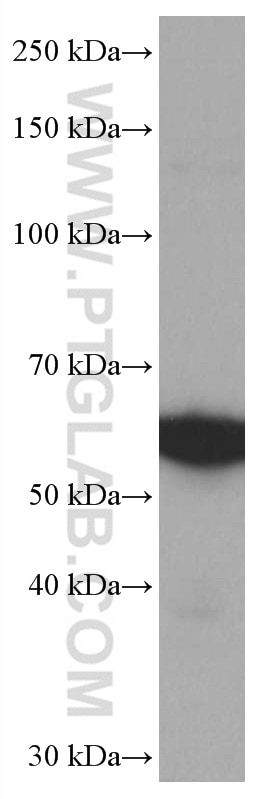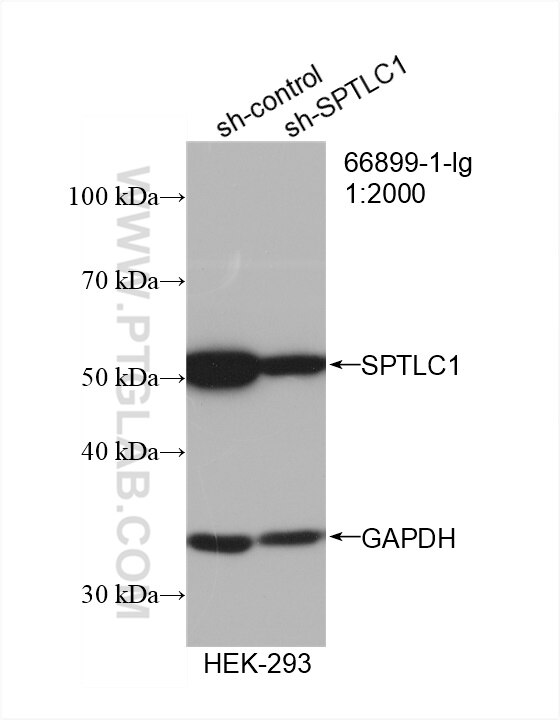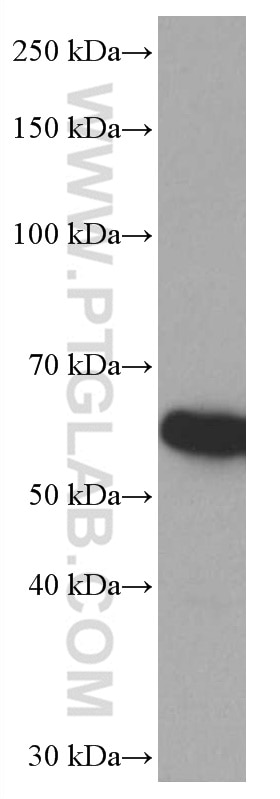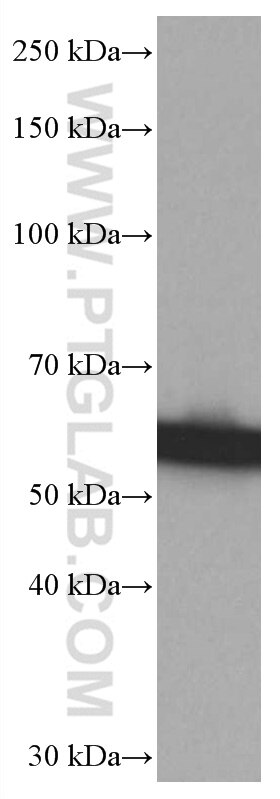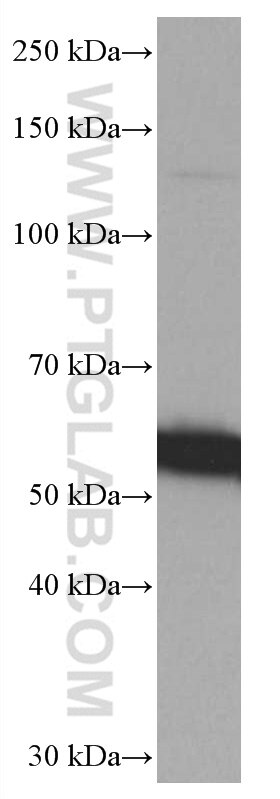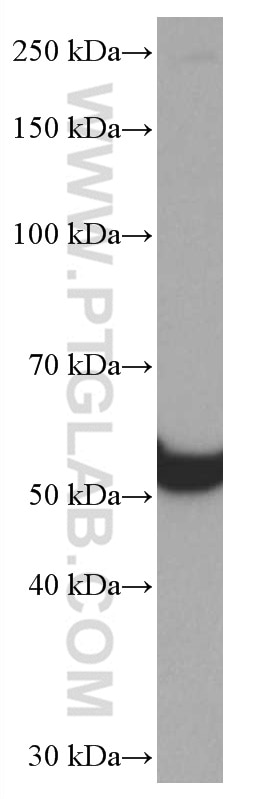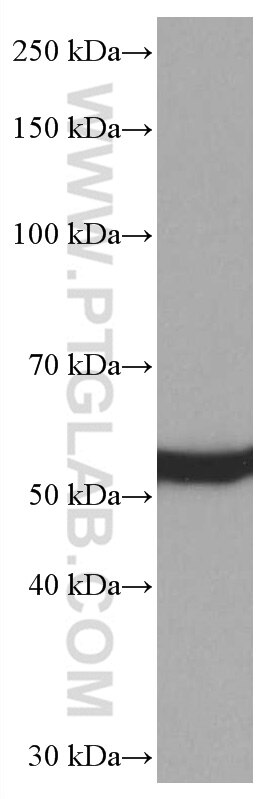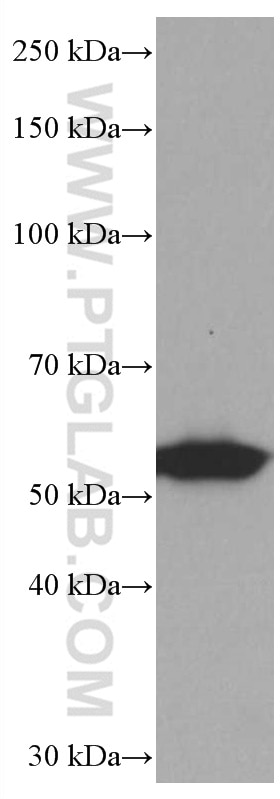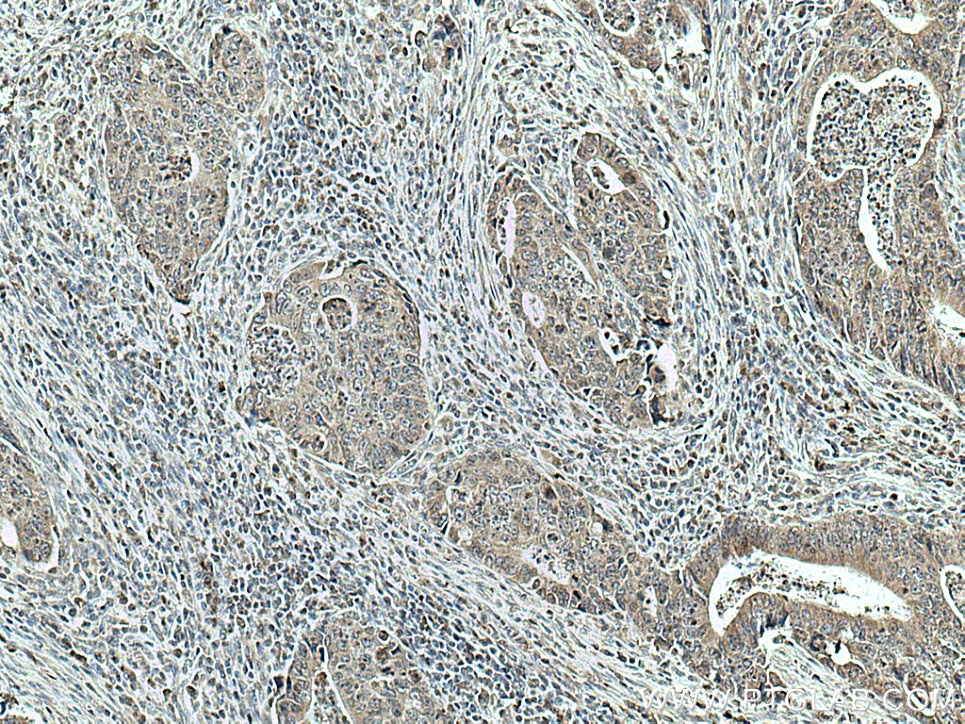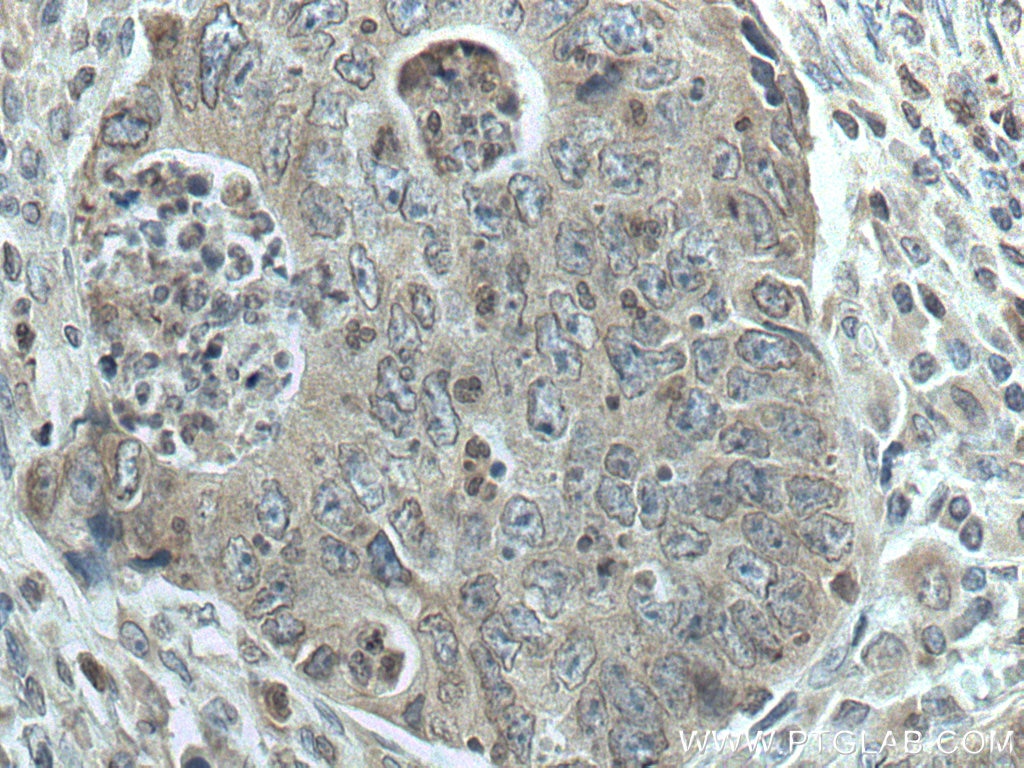- Featured Product
- KD/KO Validated
SPTLC1 Monoclonal antibody
SPTLC1 Monoclonal Antibody for IHC, WB, ELISA
Host / Isotype
Mouse / IgG1
Reactivity
Human, mouse, rat and More (1)
Applications
WB, IHC, ELISA
Conjugate
Unconjugated
CloneNo.
2D11D7
Cat no : 66899-1-Ig
Synonyms
Validation Data Gallery
Tested Applications
| Positive WB detected in | HEK-293 cells, HeLa cells, HepG2 cells, Jurkat cells, HSC-T6 cells, NIH/3T3 cells, RAW 264.7 cells |
| Positive IHC detected in | human colon cancer tissue Note: suggested antigen retrieval with TE buffer pH 9.0; (*) Alternatively, antigen retrieval may be performed with citrate buffer pH 6.0 |
Recommended dilution
| Application | Dilution |
|---|---|
| Western Blot (WB) | WB : 1:2000-1:10000 |
| Immunohistochemistry (IHC) | IHC : 1:50-1:500 |
| Sample-dependent, check data in validation data gallery | |
Published Applications
| WB | See 1 publications below |
Product Information
66899-1-Ig targets SPTLC1 in WB, IHC, ELISA applications and shows reactivity with Human, mouse, rat samples.
| Tested Reactivity | Human, mouse, rat |
| Cited Reactivity | human |
| Host / Isotype | Mouse / IgG1 |
| Class | Monoclonal |
| Type | Antibody |
| Immunogen | SPTLC1 fusion protein Ag7876 相同性解析による交差性が予測される生物種 |
| Full Name | serine palmitoyltransferase, long chain base subunit 1 |
| Calculated molecular weight | 53 kDa |
| Observed molecular weight | 55 kDa |
| GenBank accession number | BC007085 |
| Gene symbol | SPTLC1 |
| Gene ID (NCBI) | 10558 |
| RRID | AB_2882228 |
| Conjugate | Unconjugated |
| Form | Liquid |
| Purification Method | Protein G purification |
| Storage Buffer | PBS with 0.02% sodium azide and 50% glycerol pH 7.3. |
| Storage Conditions | Store at -20°C. Stable for one year after shipment. Aliquoting is unnecessary for -20oC storage. |
Background Information
SPTLC1 is a subunit of serine palmitoyltransferase (SPT) which is the key enzyme in sphingolipid biosynthesis and is essential for embryogenesis and cell survival. Mutations in the SPTLC1 gene (C133W, C133Y, V144D, and G387A) were reported to be responsible for the development of an inherited sensory neuropathy (hereditary sensory neuropathy type I, HSN1).
Protocols
| Product Specific Protocols | |
|---|---|
| WB protocol for SPTLC1 antibody 66899-1-Ig | Download protocol |
| IHC protocol for SPTLC1 antibody 66899-1-Ig | Download protocol |
| Standard Protocols | |
|---|---|
| Click here to view our Standard Protocols |
Publications
| Species | Application | Title |
|---|---|---|
Nucleic Acids Res EWS-FLI1 regulates and cooperates with core regulatory circuitry in Ewing sarcoma. |
